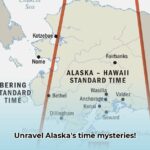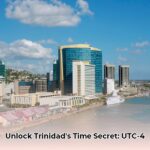Decoding Nigeria’s Time Zone (WAT)
Nigeria operates on West Africa Time (WAT), consistently one hour ahead of Coordinated Universal Time (UTC+1). This contrasts with the United States, which observes Daylight Saving Time (DST), shifting clocks forward and backward throughout the year. This fundamental difference creates a dynamic time gap between the two nations, impacting scheduling and communication. While Nigeria’s fixed time simplifies internal scheduling, it introduces complexity when coordinating with US counterparts. Effectively bridging this time difference is crucial for successful collaborations.
Converting Between WAT and US Time Zones: A Practical Approach
The time difference between Nigeria and the US oscillates between five and six hours, contingent on DST observance in the US. This fluctuation complicates scheduling meetings, calls, and other collaborative activities. Precise time conversion is paramount to avoid miscommunication and missed opportunities.
Navigating Daylight Saving Time
During DST, the US advances its clocks forward by one hour, widening the time difference with Nigeria. For example, if it’s noon in Lagos, it might be 6 a.m. in New York during standard time, but 7 a.m. during DST. This seemingly small shift can significantly impact scheduling, requiring careful consideration.
Streamlining Time Conversion
- Pinpoint the US Time Zone: Identify the specific US time zone relevant to your interaction (EST, CST, MST, PST). Each zone has a unique offset from GMT, necessitating precise identification.
- Leverage Time Zone Converters: Employ online tools or dedicated apps that automate conversions between WAT and the designated US time zone. Numerous reliable resources are readily available, offering accurate and up-to-the-minute conversions.
- Factor in DST: Crucially, ensure your chosen converter accounts for DST when applicable. This is essential for accurate scheduling during the DST period. Failing to consider DST can result in missed meetings and scheduling conflicts.
Mastering International Meeting Scheduling
Successful collaboration hinges on efficient scheduling. Consider these strategies to optimize meetings across time zones:
Best Practices for Scheduling
- Respect Working Hours: Prioritize meeting times that fall within typical working hours in both countries. This demonstrates respect for participants’ time and maximizes attendance. Avoid scheduling meetings outside these hours to prevent inconvenience and promote work-life balance.
- Crystal-Clear Communication: Always specify the meeting time in both WAT and the corresponding US time zone. This eliminates ambiguity and minimizes the risk of misinterpretation. Clearly stating both times in meeting invitations and communications prevents confusion and ensures everyone is on the same page.
- Utilize UTC as a Common Reference: Using Coordinated Universal Time (UTC) as a neutral reference point provides a consistent framework for all participants, regardless of their location. This avoids bias toward any specific time zone and simplifies scheduling across multiple locations.
Technological Aids for Scheduling
Embrace technology to streamline the scheduling process. Numerous tools and apps automate time zone conversions and DST adjustments, integrating seamlessly with popular calendar applications. These resources significantly reduce manual effort and improve scheduling accuracy, saving time and minimizing errors.
Optimizing Collaboration for International Teams
Effective communication and project management are essential for successful international teamwork. Consider these strategies:
Communication Best Practices
- Blend Synchronous and Asynchronous Communication: Combine real-time communication (video conferencing, phone calls) for immediate discussions with asynchronous methods (email, messaging platforms) for detailed information sharing and documentation. This balanced approach accommodates different communication preferences and time zone constraints.
- Establish Clear Communication Protocols: Define expectations for response times and preferred communication channels. This fosters efficiency, prevents confusion, and establishes clear communication guidelines for everyone involved.
Project Management Strategies
- Centralize Project Information: Utilize project management software (Asana, Trello, Jira) to centralize tasks, deadlines, and updates. This enhances transparency, accountability, and streamlines workflow across geographically dispersed teams.
- Embrace Flexible Scheduling: Implement flexible working hours and deadlines where feasible to accommodate team members across different time zones. This promotes inclusivity, increases productivity, and recognizes the challenges of working across diverse time zones.
By implementing these strategies and utilizing available resources, you can effectively navigate the Nigeria-US time difference, fostering seamless communication, productive collaboration, and successful project outcomes. Careful planning and the right tools are key to bridging the geographical divide and maximizing the potential of international teamwork.
- Top Crypto Quotes Widget for Android: Real-time Prices - June 26, 2025
- Find the Best App for Crypto Price Quotes: 2025 Expert Guide - June 26, 2025
- Get Live Crypto Quotes Now: A Complete Guide - June 26, 2025
















